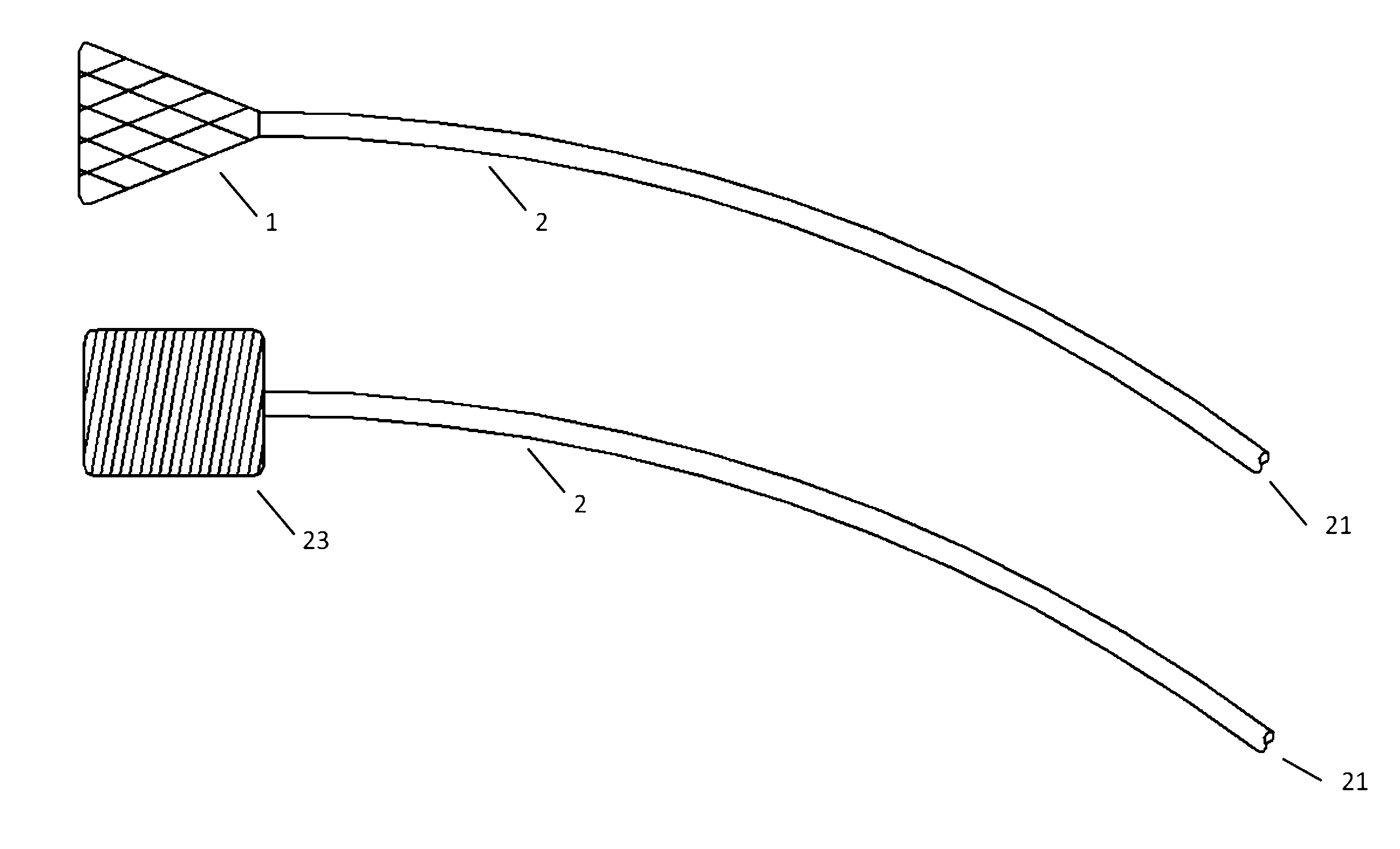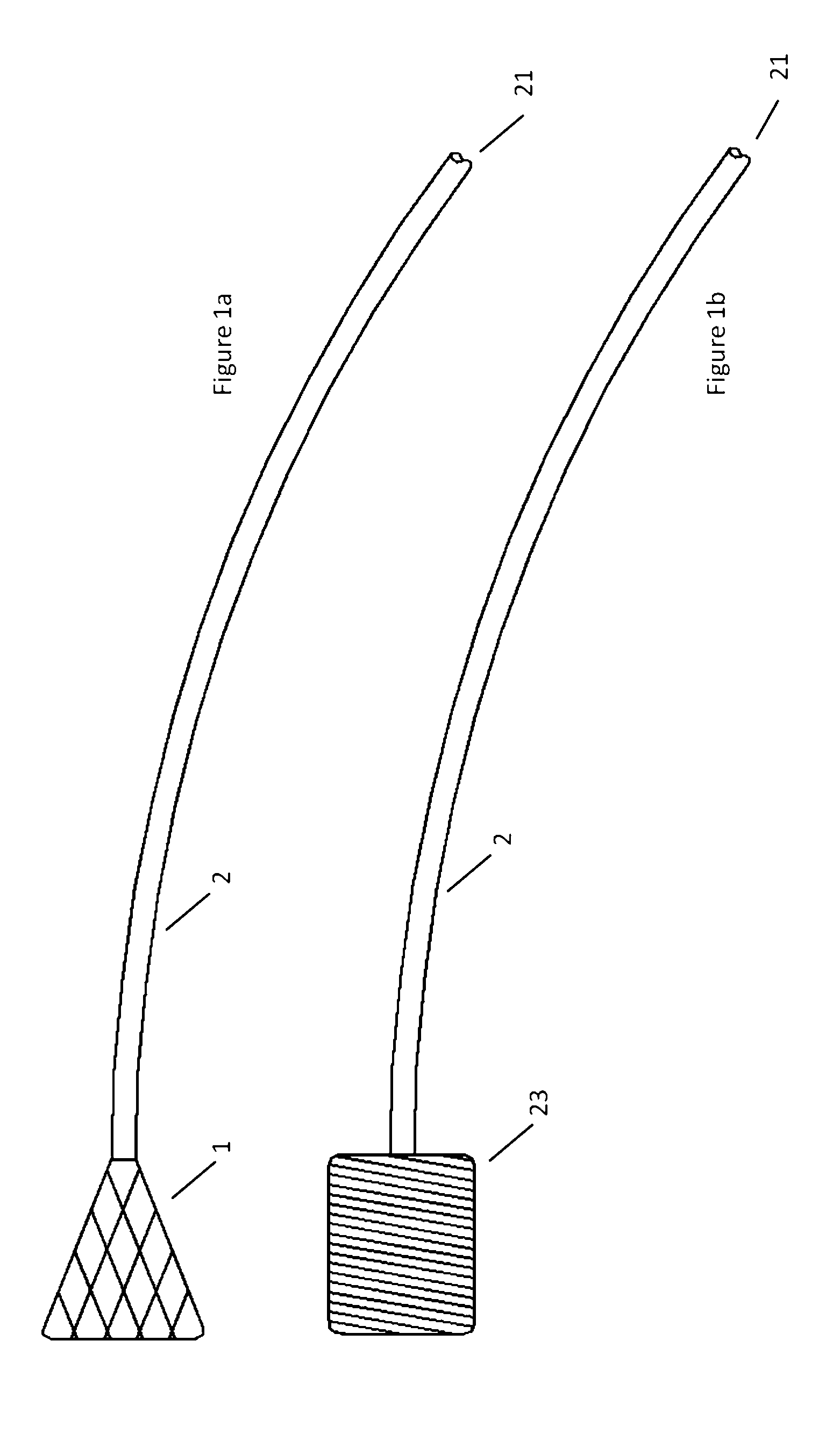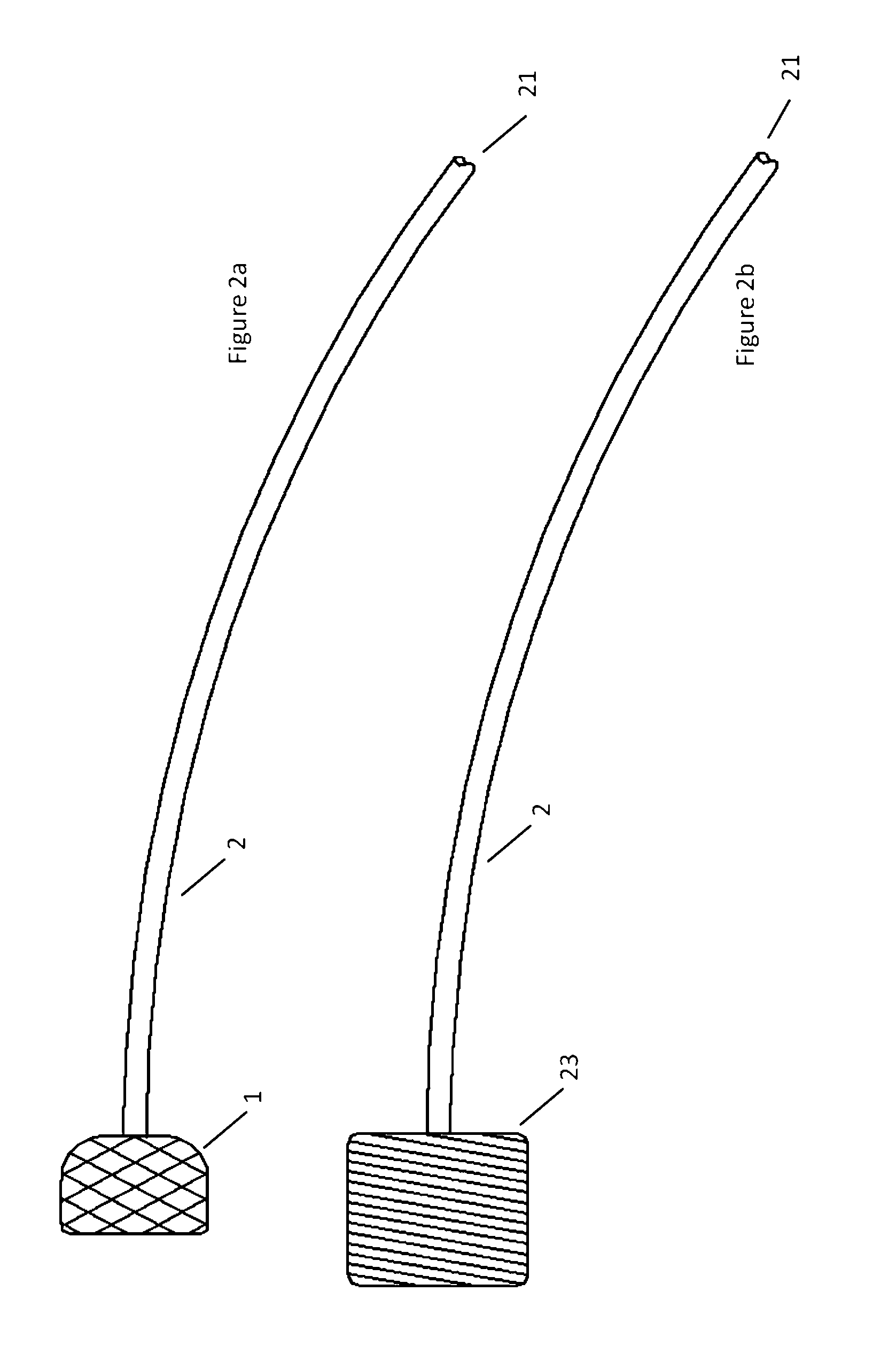Atraumatic Medical Device
a medical device and traumatic technology, applied in the field of medical devices, can solve the problems of poor outcomes, significant morbidity and mortality, and little to no user feedback regarding the amount of applied force at the tip, and achieve the effects of facilitating catheter placement within the target site, reducing dislocation, and increasing contact surface area
- Summary
- Abstract
- Description
- Claims
- Application Information
AI Technical Summary
Benefits of technology
Problems solved by technology
Method used
Image
Examples
Embodiment Construction
[0076]Turning now to the Figures, and first to FIG. 1, there is shown an embodiment of an atraumatic medical device of the invention. The device generally includes a catheter 2 and a spring tip 1 attached to the distal end of the catheter 2. In a relaxed state without contact against tissues or other structures within the body, the mesh spring tip 1 expands upon deployment through a catheter and takes a conical shape. In this embodiment, the tip is demonstrated as a mesh or braid, but can be manufactured from mesh, braid, foam, gel, an inflatable device such as a balloon, or any one of a number of metallic or polymeric materials that can expand upon exit from a delivery catheter while being flexible enough to reduce contact forces against tissues or body structures. An example of a device built with foam is demonstrated in FIG. 1b. The cylindrical foam spring tip 23 is attached to the distal end of catheter 2.
[0077]When the device is inserted into the vasculature of the body, the di...
PUM
| Property | Measurement | Unit |
|---|---|---|
| diameter | aaaaa | aaaaa |
| cylindrical shape | aaaaa | aaaaa |
| biological movement | aaaaa | aaaaa |
Abstract
Description
Claims
Application Information
 Login to View More
Login to View More - R&D
- Intellectual Property
- Life Sciences
- Materials
- Tech Scout
- Unparalleled Data Quality
- Higher Quality Content
- 60% Fewer Hallucinations
Browse by: Latest US Patents, China's latest patents, Technical Efficacy Thesaurus, Application Domain, Technology Topic, Popular Technical Reports.
© 2025 PatSnap. All rights reserved.Legal|Privacy policy|Modern Slavery Act Transparency Statement|Sitemap|About US| Contact US: help@patsnap.com



